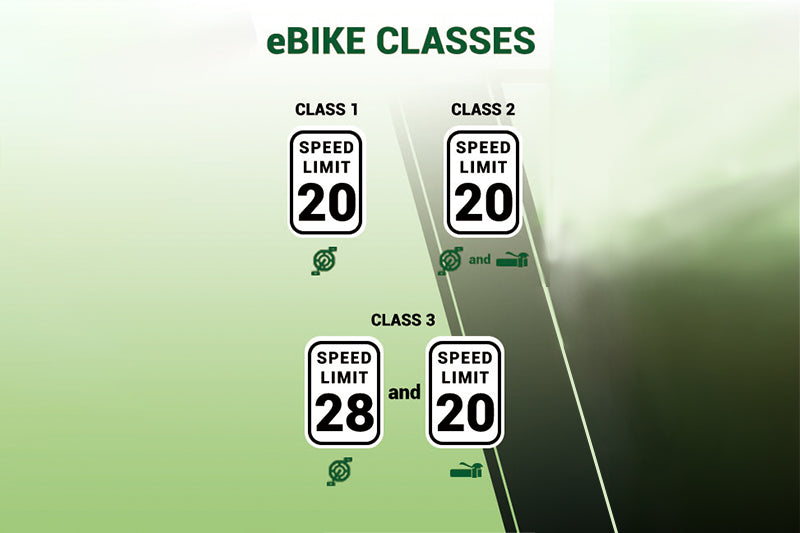 There are generally three classifications for electric bicycles (ebikes), based on the extent of support offered by the electric motor:
There are generally three classifications for electric bicycles (ebikes), based on the extent of support offered by the electric motor:
Class 1 ebikes: These bicycles are fitted with a motor that assists only when the rider is pedaling, with a maximum speed capped at 20 mph (32 km/h).
Class 2 ebikes: Equipped with a motor providing assistance up to 20 mph (32 km/h), even when the rider isn't pedaling. Class 2 ebikes feature a throttle that can activate the motor, reaching a maximum speed of 20 mph.
Class 3 ebikes: These bicycles come with a motor offering assistance while pedaling, but it can support speeds up to 28 mph (45 km/h). Some Class 3 ebikes may include a throttle. Notably, the 28 mph top speed is achievable through pedal assist alone. If a throttle is present, the maximum speed is restricted to 20 mph.
Aside from speed and motor specifications, additional regulations or limitations on ebikes may exist depending on the region or country of use, like minimum age to ride a class 3 ebike. It's crucial to acquaint yourself with the specific laws and regulations in your area to ensure the safe and legal usage of your ebike.


Share:
Is it necessary to wear a helmet while using an ebike?
5 Simple Tips to Maintain Your E-Bike Battery